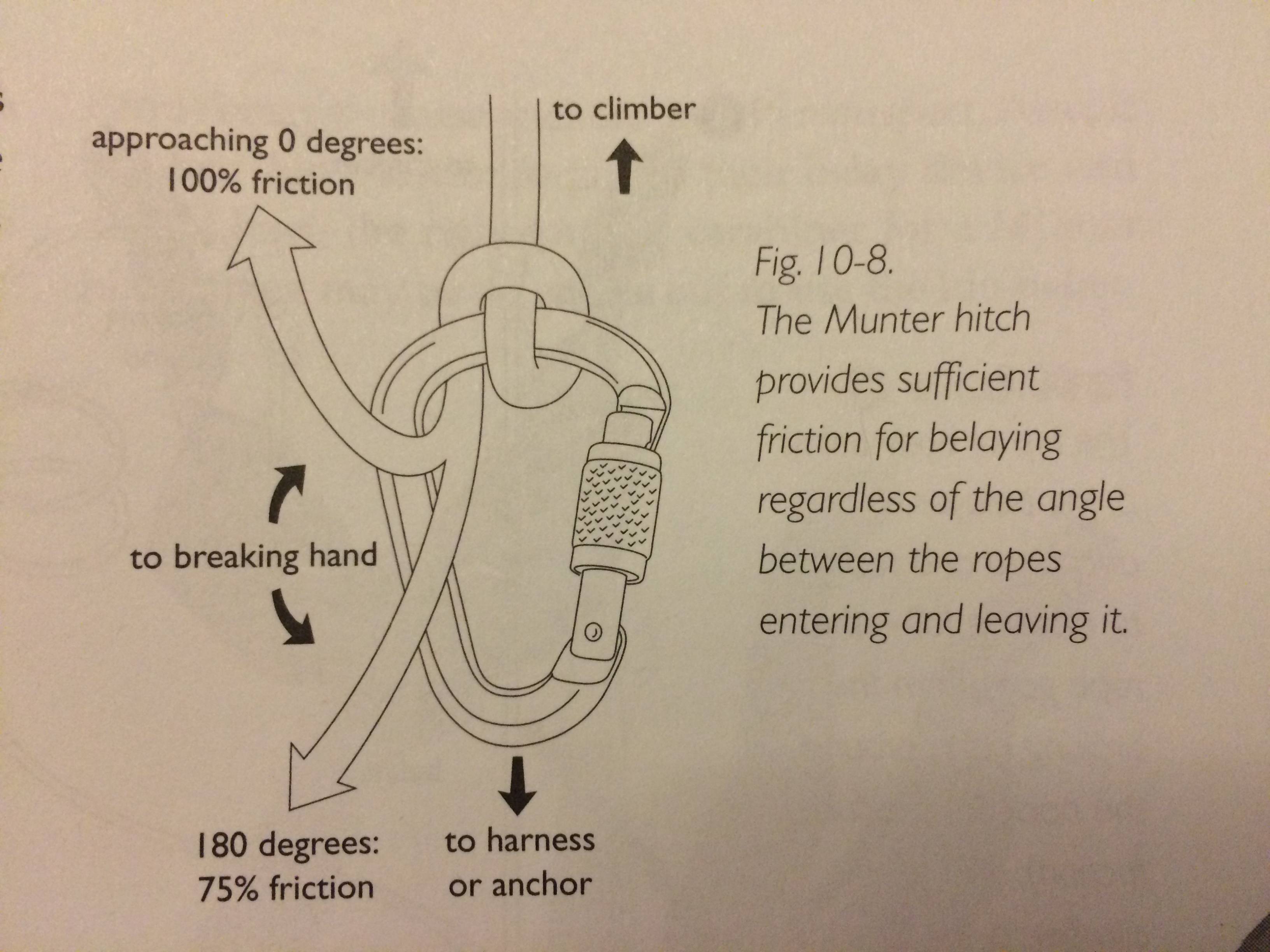A Munter hitch can brake regardless of the orientation of the brake strand. It provides the greatest braking force in the "closed" position (the brake strand running alongside the load strand), and a lesser force in the open position. The first site I found with testing found the following brake force values (tested with 11mm rope):
- Easy one-handed braking: 0.9kN open, 1.2kN closed.
- Both hands, solid stance: 1.9kN open, 3.4kN closed.
Reviewing to Table 3 from a DAV Panorama article testing belay device loads, this is comparable to other belay devices and inline with numbers reported elsewhere around the internet (~2.5kN in the closed position). Unfortunately I was unable to locate previous test reports.
The positioning of the load strand relative to the spine tends to vary across the literature, in some cases both forms may be depicted in the same book. There are potential arguments for either position; the strongest in my opinion being that having the brake strand closest to the spine keeps it from inadvertently rolling over and unscrewing the gate of the carabiner. (Or the gate may have edges that could damage the running rope.) Testing done on the clove hitch (a structurally similar knot) show no strength benefit to placing the load strand closest to the spine.
If you are using the recommended pear-shaped (or HMS) carabiner for the munter, the positioning of the load strand will tend to end up in the "belly" of the carabiner regardless of the brake strand orientation. Refer to some of the pictures here in the "Carabiner shape" section:
http://www.ropelab.com.au/munter-hitch/
Side note: The Outdoor Knots Book by Clyde Soles mentions that the twists a Munter is often accused of creating comes from a case of "pilot error" -- when the brake strand is held out to the side. Keeping the rope parallel is said to reduce or prevent this. Ironically enough, other sources have listed contradictory advice. (I have no data as to which is correct.)
